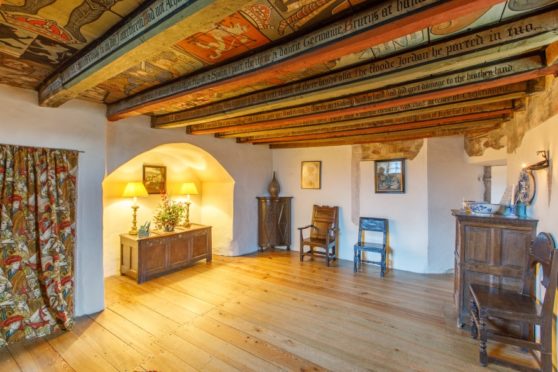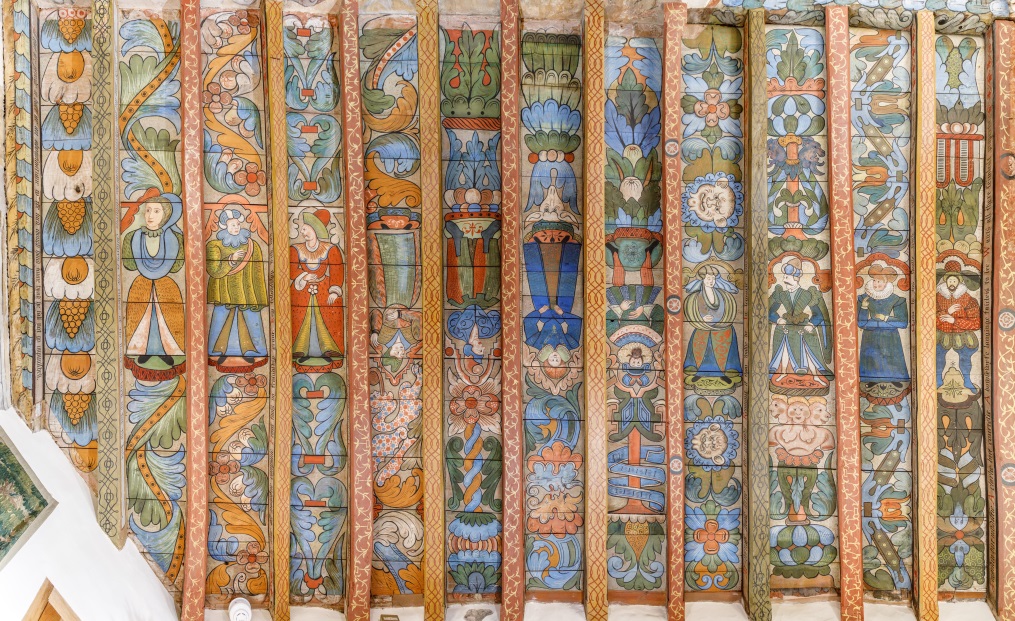Fairytale-like turrets, intricate designed gargoyles and Robert the Bruce’s ancient Horn of Leys are just a few of the treasures within Crathes Castle.
But it is its intriguing ceilings – painted in a Scottish renaissance style – that are a focal point of a new book.
People and Painting – The Story of Crathes Castle has been written by James Burnett of Leys, whose family still own the estate today, and Kirsty Haslam, a guide at the castle.
As well as delving into the history of the castle’s ceilings – which have been described as the “finest in Scotland” – they also document the history of the Burnett family, who lived in the castle for over 350 years, since its arrival in Deeside almost 700 years ago.
Having lived in the castle both as a child visiting his grandparents and as his home until 1966, Mr Burnett was “passionate” about telling the important tales from his family history.
He said: “In the 16th century, Alexander Burnett of Leys carried out as extensive a programme of painted decoration as to be found anywhere in the country.
“Consequently, the painted ceilings at Crathes are amongst the most important in Scotland.
“This is not only because of their decorative appearance, but because they tell us so much more.
“For anyone planning to visit Crathes Castle, this book should add much to the experience of their visit.”
Balancing both family and local history with the changing face of Crathes Castle, the book also explores the castle’s own celebrated walled gardens.
Each chapter has been enhanced by the efforts of co-author Ms Haslam, who has worked as a castle guide at Crathes Castle for nearly a decade.
She wrote the book alongside her PhD work at Aberdeen University, where she is exploring the impact of warfare in late medieval and early modern Aberdeen and Aberdeenshire.
People & Paintings – The Story of Crathes Castle, with a foreword by TV historian Dan Snow, is available to purchase at Crathes Castle, Milton Art Gallery, Yaedons Bookshop, Raemoir Garden Centre and the Banchory Museum.
It can also be purchased online via www.burnett.uk.com
THE HISTORY
Crathes Castle is a coveted landmark in Scotland, with tourists often using it as their first point on castle trails in the north-east.
The 16th century building was created by the Burnetts of Leys, who held onto the property for 400 years.
They were gifted the land by King Robert the Bruce in 1323.
As years progressed they built a crannog-like structure at the site – in the middle of a nearby bog.
Work in the current tower house of Crathes Castle began in 1553, but was delayed several times due to political problems washing through Scotland during the reign of Mary Queen of Scots.
It was finally completed in 1596 by Alexander Burnett of Leys, and an additional wing added in the 18th century.
Crathes Castle served as the ancestral seat of the Burnetts of Leys until given to the National Trust for Scotland by the 13th Baronet of Leys, Sir James Burnett in 1951.
A fire damaged portions of the castle – in particular the Queen Anne wing – in 1966.
The castle and grounds are owned and managed by the National Trust for Scotland and are open to the public.
Hundreds of years after work began at Crathes Castle, historians are still gleaming nuggets of information from its site.
During 2004 excavations uncovered a series of pits believed to date from about 10,000 years ago.
The find was only analysed in 2013 and is believed to be the world’s oldest known lunar calendar – used from 8000 BC to about 4000 BC.

